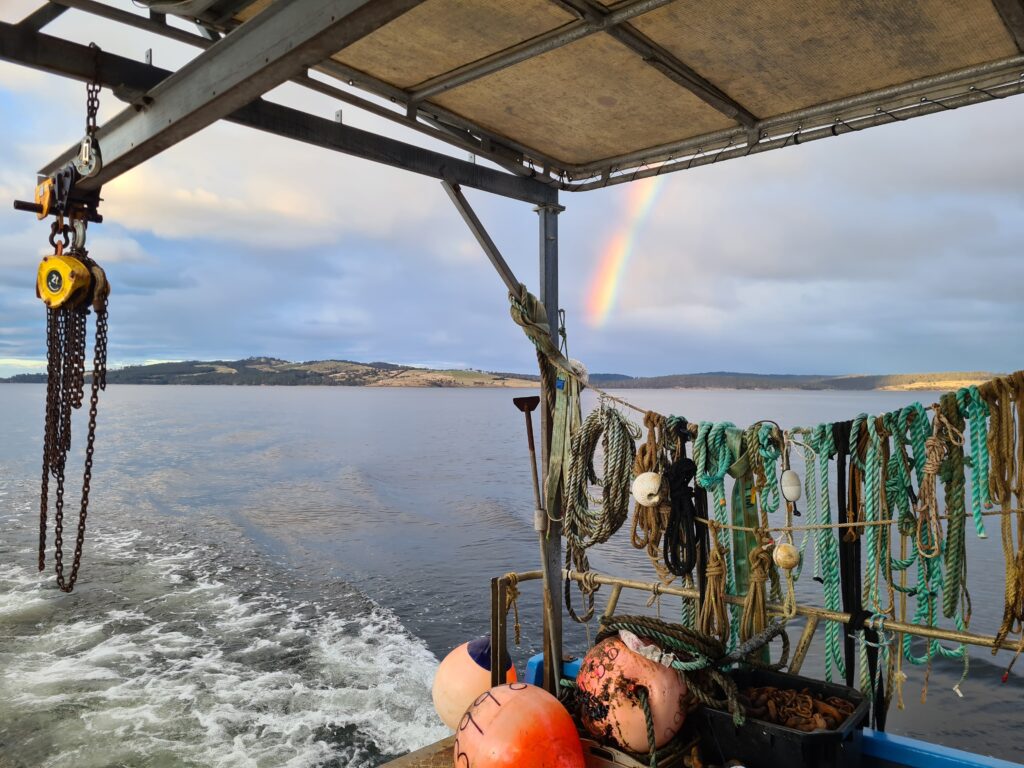Seagrass, oyster and sponge habitat in North West, Oyster Cove and Barnes Bay are on the path to recovery thanks to the installation of Environmentally Friendly Moorings (EFM) over the winter, thanks to a project being led by NRM South.
Tasmanian boats are often moored on traditional style ‘chain moorings’, which have an anchor point in the seabed, connected to a chain and a buoy on the surface. When the direction of wind or tide changes it causes the chain to scrape the seabed, causing damage to local marine communities such as seagrass.
Seagrass is an important marine habitat. It supports communities of fish (including threatened handfish and recreationally valuable fish species) and other marine life, helps to stabilise the sea floor, stores carbon, and improves water quality. Shallow coastal ecosystems, such as seagrass, can sequester up to 40 times more carbon than forests. Damage to these habitats impedes their ability to capture and sequester carbon.
With funding from the Australian Government’s Fisheries Habitat Restoration Program, NRM South has been working with their research partner, CSIRO, on the installation of a new generation of ‘Environmentally Friendly Moorings’ (EFMs). These EFMs, developed by Australian industry and CSIRO, protect seagrass habitat by keeping mooring chains off the sea floor, with only the anchor point, or ‘block’ on the sea floor.
The CSIRO has also developed solutions to make installation easier and cheaper, and potentially safer to secure boats in strong winds. With demand for new moorings increasing at a rate of 3-4% per year, EFMs may help to supply the market without further damaging our marine environment – and enabling restoration of previously impacted areas. Eleven moorings have now been installed in North West Bay and CSIRO will continue to monitor changes in both biodiversity recovery and carbon sequestration on the seafloor.
Grace Isdale, Senior Project Officer with NRM South, has spoken with several EFM leaseholders and explains that their primary motivation is overwhelmingly the protection of the marine environment. ‘A lot of the feedback showed an understanding and concern about the impacts their old chain moorings were having, and a desire to make a positive change’, said Grace. ‘Some of the people I spoke with had seen the damage first hand in other areas and said they wanted to see this design become the way of the future. We’re hoping this project will go a long way to encouraging others to make the switch by showing EFMs are a safer and more cost-effective option and come with the added bonus of being an environmentally low-impact solution’.
This project is supported by NRM South through the Australian Government’s Fisheries Habitat Restoration Program and runs until June 2023. Project partners include CSIRO, OzFish Unlimited and Kingborough Council, with support from Marine and Safety Tasmania.
-ENDS-
Main image credit: Andrew Martini, CSIRO
